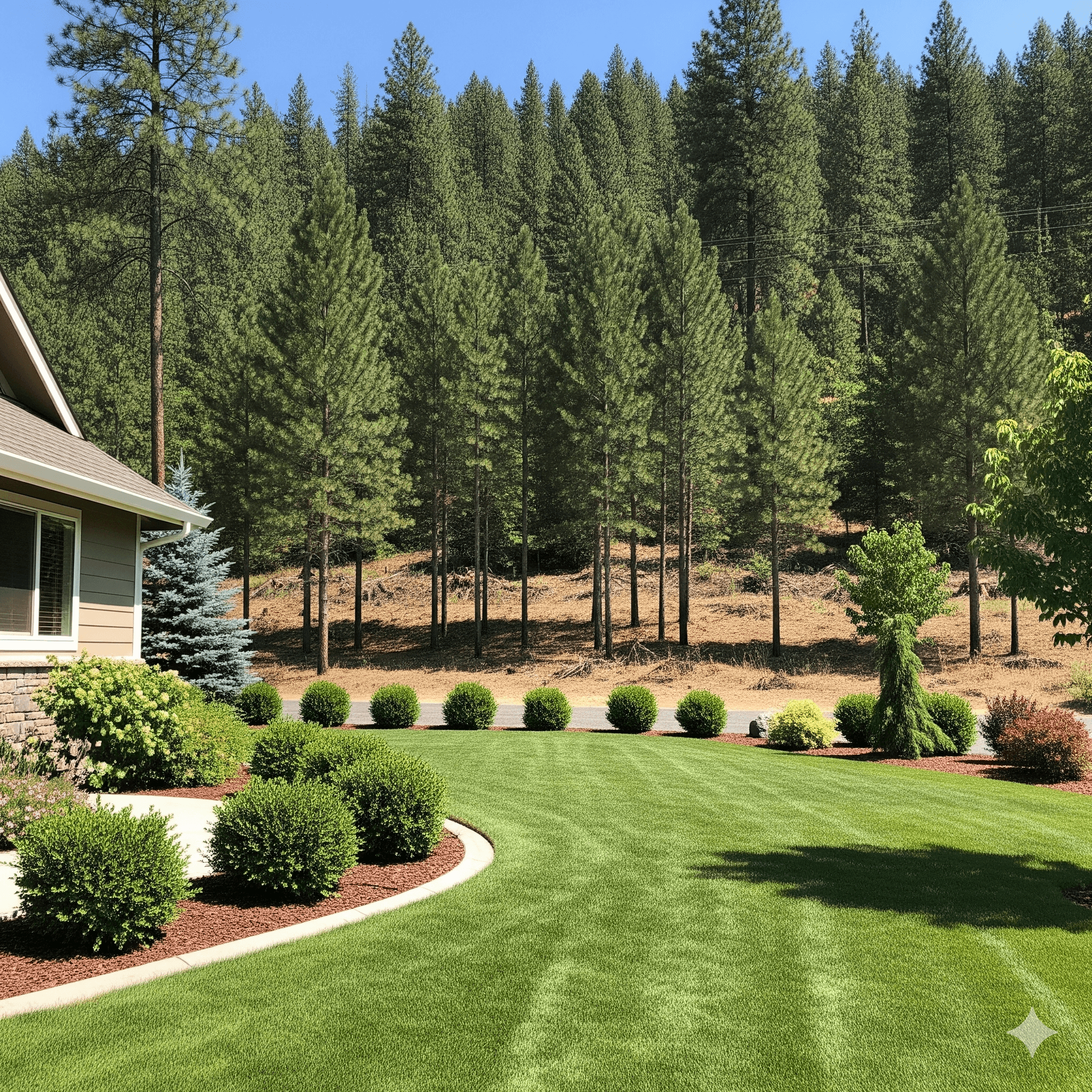Project Gallery
Explore real-world forestry mulching, defensible space and lot clearing transformations across Spokane, Green Bluff, Deer Park, Mead, Chattaroy and surrounding Inland Northwest properties. These representative projects highlight fuel load reduction, improved access, reclaimed visibility and wildfire mitigation outcomes achieved through professional vegetation management.

Hillside Fuel Reduction
forestry mulching
Mechanical fuel load reduction & understory thinning improved ladder fuel separation and restored access.

Home Perimeter Clearance
defensible space
Zone-focused vegetation modification reduced ignition pathways near structures and improved firefighter defensibility.

New Build Preparation
lot clearing
Selective overgrowth removal prepared the parcel for build staging while preserving soil integrity.
What These Projects Demonstrate
Forestry mulching eliminates multiple traditional clearing steps (cut, pile, haul, burn) by processing vegetation in place. The mulch layer reduces erosion, helps moisture retention and slows invasive regrowth—supporting long-term defensible space maintenance.
Defensible space implementation is strategic—not clear cutting. We interrupt fuel continuity, manage ladder fuels and adjust spacing so flame lengths and radiant heat are reduced before reaching structures or infrastructure.
Lot & brush clearing opens access, prepares parcels for development and enhances property marketability. When paired with follow-on selective mulching or seasonal maintenance, it creates stable conditions for staging, fencing, trails or agricultural conversion.
Curious what a similar outcome would look like on your acreage? Schedule a site-specific assessment—we'll outline realistic achievable improvements and phased options if needed.
Each transformation shown represents a different objective: wildfire ignition pathway reduction, improved ingress / egress reliability, build preparation, pasture edge reclamation, or visual and recreational enhancement. In Spokane and surrounding Inland Northwest communities, mixed fuel profiles (conifer litter, shrub layers, invasive blackberry or hawthorn, dense sapling regeneration) require a selective rather than destructive approach. Forestry mulching produces a manageable post-treatment environment most landowners can maintain with homeowner-scale equipment instead of repeated heavy contractor mobilizations.
The resulting mulch layer delivers compound value: it moderates soil temperature, buffers moisture fluctuation during summer drought periods, suppresses erosion on slopes, slows undesirable seed germination, and gradually contributes organic matter that improves microbial activity. Unlike raw dozer scraping—which exposes mineral soil and encourages opportunistic invasive colonization—precision mulching preserves soil structure while still removing hazardous ladder fuels.
For properties pursuing Washington DNR cost-share alignment, clear photographic documentation like the before / after context represented here can support treatment justification (fuel continuity reduction, spacing improvements, surface fuel load moderation). We help capture and organize this material when projects are scoped with cost-share eligibility in mind.